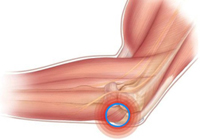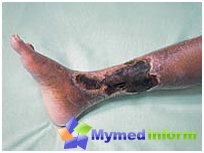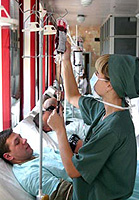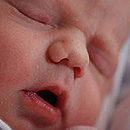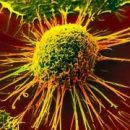How to carry out treatment of patients with proligens? Answer to this question you will find in the article.
Content
Treatment breakdown
Speaking about the treatment of proligence, you need to say a few
words about the wounds in general. How the wound appears and develops? At first on
The fabric has damaging power (in the case of laying ones, this damaging
Power is represented by compression), which causes nutrition and
Then shelf tissue. Damaging force acts inconstant. If
Its action to weaken or stop the blood circulation in the place of damage
Recover. This will lead to the rejection of the necrosis formed
(breakdown) and gradual wound healing.
Treatment of bedside down, thus comes down to three
Principles:
To reject necrosis use:
- mechanical removal of necrotic masses surgically;
- Application
Anti-Rubber Tools: Sponge «Methracol». Methracol renders
anti-inflammatory action, stimulates reparative processes in
Ranan, accelerates the growth and ripening of granulation tissue and epithelization.
When applied to the wound, the sponge fits tightly to its surface,
absorbs the wound discarded, swells and is gradually lysed,
released memetracyl.
Treatment of spoken wound. It is necessary to create wet wound content conditions using,
For example, alginates (in the form of napkins and powder for filling RAS),
Hydrocoll, Duoderm, Hydrocoll, Duoderm, Hydrosorb and Dru.),
Cleaning and closing wounds. These dressings are enough
expensive. For wound healing, you can use the most diverse
Healing means: Mazi «Levosyn», «Levomikol», «Aktovegin», «Salcossuril», sea buckthorn oil and many others. Often Prolearni
complicated by the addition of secondary infection, and then it is necessary
the use of antiseptic and antibacterial agents such as
Boric acid, white streptocid in powder, 3% peroxide solution
hydrogen, Furacillin solution 1: 5000, ointments «Levomikol», «Levosyn». IN
Heavy cases, in weakened and elderly patients are shown
Antibacterial drugs inside.

Large areas and difficult to heal breaks are sometimes possible to cure only a surgical path - tissue transplantation.
When treating breakdowns, it is necessary to apply bandages. Where it is
You may have a bandage for fixing bandages, in other cases
Use plaster. Not every plaster is suitable for this. Proleside
it is necessary to treat for a long time, which means that the plaster will have to be applied
For a long time. What problems may arise? Patch
prevents the normal functioning of the skin (breathing, allocation and
Dr.). When removing the patch, the surface layer of skin cells is broken off,
What is why there may be a long-term use of the patch
Additional wounds. To avoid such complications, use
Paper-based plaster - leather under it breathe well, and glue is good
fixes the dressing, but does not break the cells from the surface of the skin with
Reservation removal. Imposing a plaster, do not pull it hard,
To avoid the formation of small skin folds, and also take into account
The fact that when changing the position of the patient, soft tissues will be
shift and stretch, which can lead to education
Unwanted skin folds.
The skin around the skin is needed the most careful care. Her
need to wash with soap. No need to be afraid that soap foam will fall into
wound - it does not worsen the state of the prolee. During washing it is impossible to rub
Skin, but only wash. After washing it is necessary to achieve either
self-drying of the skin, or you can use one of
The following preparations: 1% solution of manganese, diamond greens,
Mazi containing zinc. The last remedy is preferable to others
How, when using it, gauze bandages do not stick to the edges of the wound and,
Accordingly, the newly formed epithelium and
Granulation when removing a dressing.
Overlapping dressings on deep straggles, wounds are necessary for the whole depth to tampony (close) by a bandage, but not tight, and loose.



